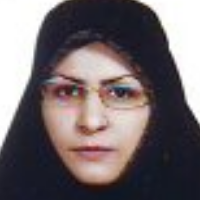فاطمه منصورزاده
-
بحث پیرامون جهان و شناخت علت مبدا آن و نیز چگونگی حصول این شناخت، از مهم ترین مباحث کلامی به حساب می آید و این امر به طور جدی در ادعیه و نیایش های ایمه نیز مدنظر قرار گرفته است. پژوهش حاضر با رجوع به مفاهیم دعای عرفه و روایات به بررسی و تحلیل اعتبار و جایگاه براهین کلامی معرفت الهی از منظر امام حسین علیه السلام پرداخته است. مضامین دعا دربردارنده سه نوع معرفت (تجربی، عقلی و شهودی) به خداست. امام علیه السلام معرفت تجربی و عقلی را شرط لازم می داند، اما مکرر اذعان و تذکر می دهد شرط کافی نیست؛ زیرا ماحصل این دو نوع معرفت به وساطت آثار خلقت و مفاهیم عقلی صورت گرفته، نه شهود و اشراق قلبی. بلکه معرفت اصلی کامل تر و صحیح تر همان معرفت شهودی که به حسب ظرفیت بنده، خدا نور معرفت خودش را به قلب بنده اش عرضه می کند. البته شناخت کنه ذات خدا از نظر امام نه تنها مقدور کسی نیست، که محال است.
کلید واژگان: معرفت خدا، دعای عرفه، امام حسین علیه السلام، برهان شهود، برهان تجربی، برهان عقلیThe theological and ontological issues are one of the most important issues in the supplications and prayers of the Imams of the Ahl al-Bayt (PBUT). Focusing on the supplication of “’Arafa” as well as narrations, this research study seeks to examine the validity and position of theological arguments from Imam Hussain (PBUH)’s point of view. The themes of prayer include three types of knowledge (empirical, rational, and intuitive). Imam (PBUH) acknowledges empirical and rational knowledge to God, but repeatedly warns that they are not enough, because these knowledge focus solely on sense and reason and are deprived of intuitive and illuminating knowledge. The basic and complete knowledge is the intuitive knowledge that God shines upon the heart of his servant. Of course, form the viewpoint of the Imam (PBUH), knowing the essence of God totally is impossible.
Keywords: God’s cognition, prayer, Imam Hussain (PBUH), intuitive argument, experimental argument, intellectual argument -
فعلیت صغری از شروط انتاج مختلطات شکل اول است که بیش تر منطق دانان، از جمله ابن سینا، در بسیاری از آثار خود بدان پای بندند. ابن سینا در مبحث مختلطات شکل اول فقط در دو موضع (صغرای ممکنه خاصه با کبرای وجودیه و صغرای مطلقه خاصه با کبرای موجبه ضروریه)، جهت نتیجه را تابع کبری ندانسته است. در حالی که بنا بر رای خواجه طوسی مواضع دیگری نیز وجود دارد که نتیجه تابع کبری نیست. خواجه کبرای وصفیه (یکی از دو مشروطه عامه یا خاصه یا یکی از دو عرفیه عامه یا خاصه) را نیز به این مواضع می افزاید. با تفحص در آثار منطق دانان سینوی تعداد این مواضع به 42 ضرب می رسد. اگرچه منطق دانان در تعیین جهت نتیجه 31 ضرب از این ضروب اتفاق نظر و در تعیین جهت نتیجه 11 ضرب باقی مانده اختلاف نظر دارند، اما هیچ یک از آنان نتیجه این 11 ضرب را تابع کبری ندانسته اند. پژوهش حاضر به بررسی 31 ضرب یادشده و ضوابط و ادله منطق دانان در باب جهت نتیجه آن ها می پردازد.کلید واژگان: مختلطات شکل اول، ابن سینا، صغرای فعلیه، کبرای وصفیهIn the discussion of mingled modalities of the fist figure, Avicenna thought that the mode of conclusion doesnt follow major premise just in two modes (the combination of proper minor with existential major and proper absolute minor premise with affirmative necessary) while according to the Khaje Toosi's thought, other modes, including attribute major (one of the general and specific conditional or general and specific conventional), dont follow the mode of conclusion as well. Studying the works of the ancient logicians, we find out that the number of the modes comes up to 42. Identifying mode of conclusion, logicians are agreed on 31 modes, but disagreed on their rest 11, though none of them considered the conclusions of these 11 modes as followings of the major. The present thesis is studying the mentioned 31 modes, their standards/criterions and the logician's reasons of the mode of conclusion. In addition, the issue of those 11 modes would be discussed later in an independent survey.Keywords: Mingled modalities of first figure, Avicenna, Absolute minor, Attribute major
- این فهرست شامل مطالبی از ایشان است که در سایت مگیران نمایه شده و توسط نویسنده تایید شدهاست.
- مگیران تنها مقالات مجلات ایرانی عضو خود را نمایه میکند. بدیهی است مقالات منتشر شده نگارنده/پژوهشگر در مجلات خارجی، همایشها و مجلاتی که با مگیران همکاری ندارند در این فهرست نیامدهاست.
- اسامی نویسندگان همکار در صورت عضویت در مگیران و تایید مقالات نمایش داده می شود.



